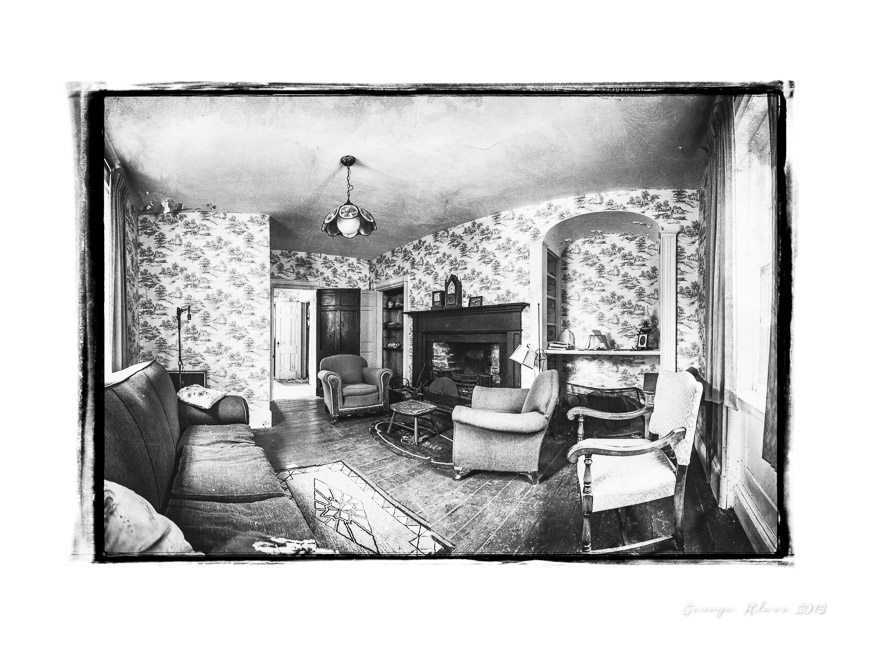George Klass Photography examples - Click to enlarge

The old William Campbell House,
Tatamagouche, Nova Scotia.
A neglected gem. Constructed by shipbuilders, massive hand-hewn beams, solid as a rock, an upside-down boat. 1840. Changed hands for the first time in 2016. Not lived in permanently for decades. Faded glory. Slated for possible demolition.
Ancient furniture, ancient architecture. Magnificent fireplace once used for cooking. Christian door (+), alcove where family plate was displayed now showing 1930s lampshade, oil lamp and photo dated 1867.
Not a squeak in the wide-board floor. Built-in china cabinet including aesthetic movement “Perak” transferware china pieces from 1885, early Limoges plate, part of an “Old Colonial” dinner set.
Pink curtains. Sturdy hooked rugs stand the test of time as the steeple and mantel clocks look on. Saved.
Wet Plate is an antique photographic process discovered in the mid 19th century, which was also a primary photographic method used until the 1880s.
The images resulting from this process can be ambrotypes, glass negatives or tintypes. Although quite a demanding, expensive and lengthy process, wet plate collodion technique is gaining back its popularity among many contemporary photographers.
This one of the series of six images emulating the original wet plate look using digital processes and some artistic licence.